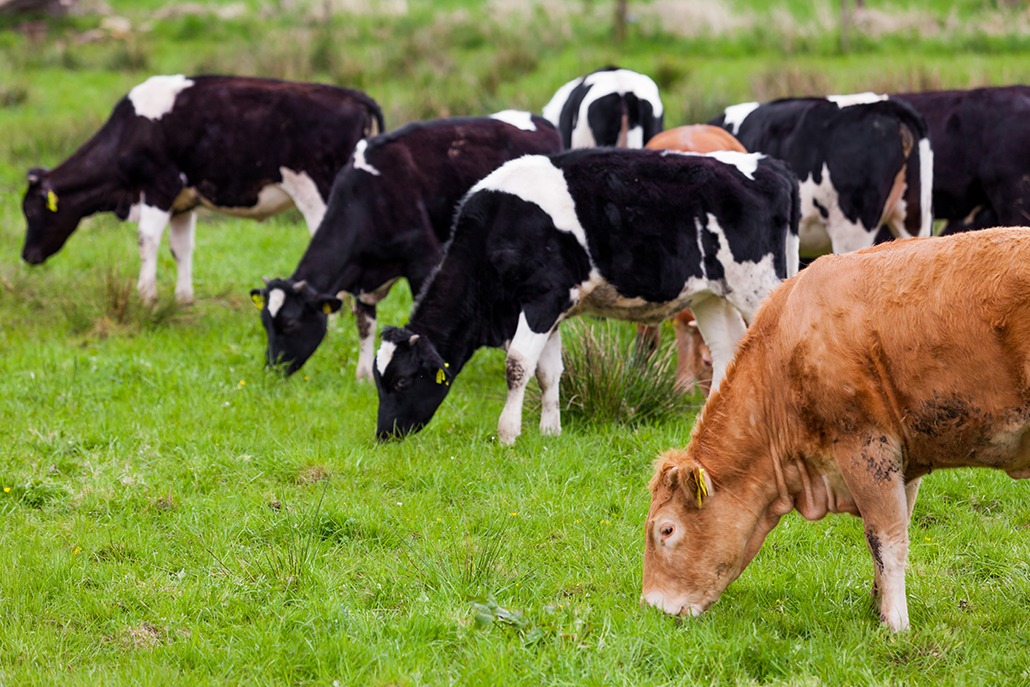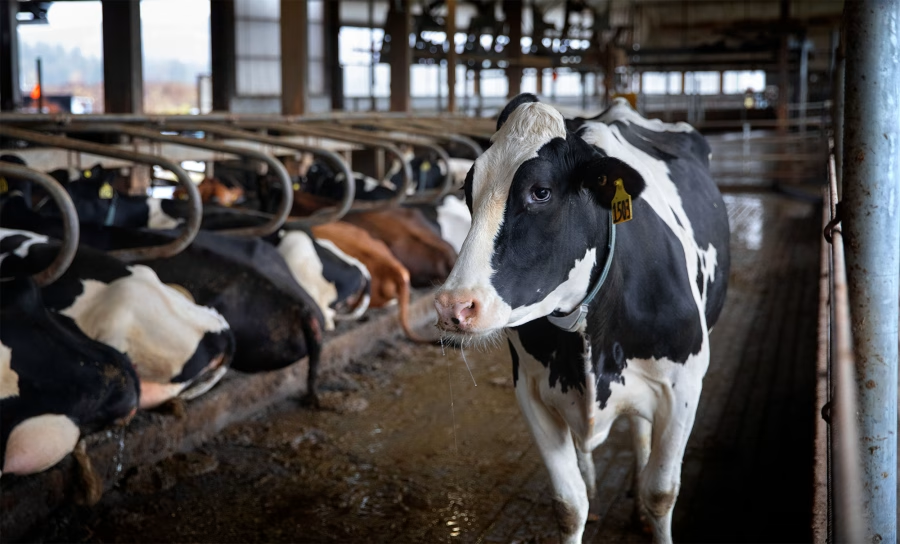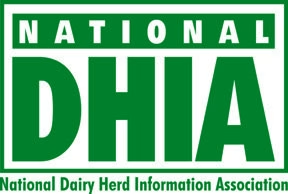Maximize your beef-on-dairy profits by harnessing EPDs. Discover how understanding expected progeny differences can boost your program’s success and market appeal.

Amidst the ever-changing market dynamics, one breeding strategy stands out for its financial rewards: beef on dairy. With beef calf prices skyrocketing and milk prices struggling, venturing into the beef market is enticing. Native beef producers are grappling with the double whammy of drought conditions and escalating costs, resulting in a shortage of beef calves. This presents a golden opportunity for dairy producers to supply crossbred cattle to the beef market, reaping the benefits of high beef prices. In certain regions, day-old calves are commanding prices exceeding $1,000, a testament to the potential profitability of beef-on-dairy programs.
Beef-on-dairy programs are filling the void left by native beef producers and setting the stage for long-term profitability by creating cattle that meet market demands. This article explores navigating Expected Progeny Differences (EPDs) to make informed breeding decisions, optimize calf growth, and meet market demands. Discover essential traits—fertility and calving ease to carcass quality—ensuring your beef-on-dairy program thrives. Get ready to transform insights into profit and maximize this evolving market opportunity.
Harnessing EPDs: Elevating Your Beef-on-Dairy Program for Profitability and Market Success
Expected progeny differences (EPDs) are not just tools but strategic weapons for dairy producers looking to enhance their beef-on-dairy operations. These predictions estimate the genetic potential of future offspring for various traits, utilizing data from breed associations and advanced genomic tools. By harnessing the power of EPDs, dairy producers can make informed decisions that can significantly improve their operations’ profitability and market success.
By leveraging EPDs, dairy producers can significantly improve their operations’ profitability. Key traits like calving ease and fertility are essential for ensuring healthy births and minimizing labor, directly impacting operational efficiency and continuous milk production.
Growth traits, such as Weaning Weight and Yearling Weight, enable producers to raise calves that reach market weight more efficiently. This maximizes financial returns, especially when retaining calves to heavier weights before sale.
Terminal traits like carcass weight and marbling are vital and strategic for downstream customers, including feedlots and packing plants. Selecting sires with favorable EPDs for these traits is not just a choice but a strategic move that helps dairy producers build long-term relationships with buyers who value high-quality, predictable carcasses. This strategic approach often leads to premium payments, a testament to the importance of tailoring genetic selections to market needs for lasting market success.
Strategically applying EPDs in beef-on-dairy programs boosts immediate operational efficiency and ensures sustained profitability by producing desirable, high-quality cattle that meet market demands.
Fertility and Calving Ease: Cornerstone Traits for Optimizing Dairy Operations
Fertility and calving ease are not just important; they are the cornerstones of optimizing dairy operations. Fertility directly impacts herd productivity and profitability, making it crucial for cows to conceive efficiently. Difficult calvings can severely affect cow and calf health, delaying the dam’s return to milk production and increasing costs due to extended days open and potential veterinary care. Therefore, prioritizing these traits is essential for dairy operations’ smooth functioning and profitability.
While beef breed association EPDs lack direct fertility markers, available genomic estimates and internal fertility indexes provided by A.I. companies can be valuable. Selecting sires with proven fertility metrics ensures a smoother breeding program.
Calving ease is equally important. Hard calvings can reduce subsequent lactation milk yield and cause severe health issues for both cow and calf. Beef sires’ Calving Ease EPDs provide statistical predictions based on observed calving ease and birth weights in progeny. Higher Calving Ease EPDs in beef indicate a higher percentage of unassisted births, thus a desirable trait in sire selection.
For breeds where Birth Weight EPDs are available, lower birth weights often correlate with easier calvings as lighter calves present fewer delivery complications. However, since Birth Weight is included in Calving Ease EPDs, focusing on Calving Ease can be more beneficial against calving difficulties.
In summary, prioritizing fertility and calving ease enhances reproductive efficiency and secures her well-being. This strategic focus leads to improved milk production, reduced veterinary costs, and a more profitable dairy operation.
Maximizing Growth and Efficiency: The Critical Role of Weaning Weight, Yearling Weight, and RADG in Beef-on-Dairy Programs
The impact of traits like Weaning Weight, Yearling Weight, and Residual Average Daily Gain (RADG) is pivotal for dairy producers raising beef-on-dairy calves. These traits aid in selecting sires that produce desirable growth, ensuring calves reach optimal weight at various growth stages.
Weaning and Yearling weights predict differences in calf weight at 205 days and 365 days, respectively. Higher values indicate better growth performance, translating to heavier, more marketable calves. This bolsters immediate profitability and enhances the herd’s long-term reputation.
Residual Average Daily Gain (RADG) measures weight gain efficiency for the same feed amount. A higher RADG value means calves gain weight more efficiently, reducing feeding costs and accelerating market readiness. This aligns with buyer specifications for weight and size, which is crucial in a competitive market.
Producers raising heavier beef-on-dairy calves will benefit from these growth traits, ensuring consistent, predictable performance. Selecting for these traits fosters strong buyer relationships, enhancing market opportunities even amid market fluctuations.
Strategic Selection for Terminal Traits: Enhancing Carcass Quality and Profitability
Carcass traits are pivotal for beef quality and profitability, centering on Carcass Weight (C.W.), Marbling, and Ribeye Area (REA). A higher C.W. means more pounds, which translates to better economic returns since grid pricing rewards heavier carcasses. Marbling, essential for superior USDA Quality Grades (Q.G.), ensures consumer satisfaction with tenderness and flavor, fetching premium prices. REA indicates muscling; an optimal size means a well-muscled carcass. However, overly large ribeyes can be discounted if they don’t fit specific branded programs. Selecting sires with strong EPDs for these traits is critical to producing high-quality beef-on-dairy crossbreds that meet market demands and boost profitability.
Aligning Strategies with Scenarios: Tailoring Traits for Maximum Impact
Let’s explore a few scenarios to see which traits should be prioritized:
Scenario 1 – Typical Tim: This dairy uses beef sires on mature cows and younger females, often having calving difficulties. They sell day-old calves through a supply chain program that values Quality Grade (Q.G.) at the end. The focus should be on Calving Ease and Marbling to meet terminal trait thresholds suggested by buyers.
Scenario 2 – Smaller Sam: A small dairy not serviced by a pickup route but markets elite beef-on-dairy calves through a local sale barn. Without knowing the calves’ final destination, this producer should prioritize Fertility and Birth Weight EPDs to avoid overly small calves, as sale barns often differentiate prices by weight.
Scenario 3—Feedlot Fred: This dairy raises crossbred calves to 500 pounds, marketing directly to a feedlot that favors heavier carcasses. The focus should be on growth traits like Weaning Weight and RADG for feedlot efficiency and Carcass Weight to align with the feedlot’s performance grid.
It is crucial to address fertility and calving ease while considering buyers’ needs for growth and carcass traits through genetic selection. This approach will help build lasting relationships and set your beef-on-dairy program up for long-term success.
The Bottom Line
Using Expected Progeny Differences (EPDs) in your beef-on-dairy program yields significant benefits by enabling precise breeding decisions that meet market demands and drive profitability. Focusing on crucial traits like fertility, calving ease, growth, and carcass quality optimizes operations, produces high-quality calves, and strengthens long-term buyer relationships. Customizing genetic selections to market needs ensures dairy producers can consistently supply predictable crossbreds, building a sustainable business that adapts to market changes. Balancing these factors boosts immediate financial gains and lays the groundwork for lasting market success.
Key Takeaways:
- Market Opportunity: Beef-on-dairy crossbreds are in high demand, with day-old calves fetching substantial prices due to beef calf shortages.
- Fertility and Calving Ease: Prioritize fertility and easy calving traits to ensure smooth reproduction and quick return to production for dairy cows.
- Growth Traits: Focus on Weaning Weight, Yearling Weight, and RADG to ensure efficient growth and higher sale weights, whether retaining calves or selling early.
- Terminal Traits: Select for desirable carcass traits such as Marbling and Ribeye Area to meet the specifications of feedlots and packing plants, optimizing carcass quality and yield.
- Buyer Relationships: Understand your buyers’ requirements and tailor your genetic selection to meet their needs, fostering long-term profitable relationships.
Summary:
Beef-on-dairy programs are gaining popularity due to rising beef calf and milk prices, benefiting dairy producers by supplying crossbred cattle to the beef market. Genetic Predictions (EPDs) are strategic tools used to enhance beef-on-dairy operations by estimating future offspring’s genetic potential for various traits. Key traits like calving ease and fertility are essential for healthy births, minimizing labor, and maximizing operational efficiency. Growth traits like Weaning Weight and Yearling Weight enable calves to reach market weight more efficiently, maximizing financial returns. Terminal traits like carcass weight and marbling are vital for downstream customers, and selecting sires with favorable EPDs helps build long-term relationships with buyers. Balancing these factors boosts immediate financial gains and lays the groundwork for lasting market success.
 Download “The Ultimate Dairy Breeders Guide to Beef on Dairy Integration” Now!
Download “The Ultimate Dairy Breeders Guide to Beef on Dairy Integration” Now!
Are you eager to discover the benefits of integrating beef genetics into your dairy herd? “The Ultimate Dairy Breeders Guide to Beef on Dairy Integration” is your key to enhancing productivity and profitability. This guide is explicitly designed for progressive dairy breeders, from choosing the best beef breeds for dairy integration to advanced genetic selection tips. Get practical management practices to elevate your breeding program. Understand the use of proven beef sires, from selection to offspring performance. Gain actionable insights through expert advice and real-world case studies. Learn about marketing, financial planning, and market assessment to maximize profitability. Dive into the world of beef-on-dairy integration. Leverage the latest genetic tools and technologies to enhance your livestock quality. By the end of this guide, you’ll make informed decisions, boost farm efficiency, and effectively diversify your business. Embark on this journey with us and unlock the full potential of your dairy herd with beef-on-dairy integration. Get Started!















